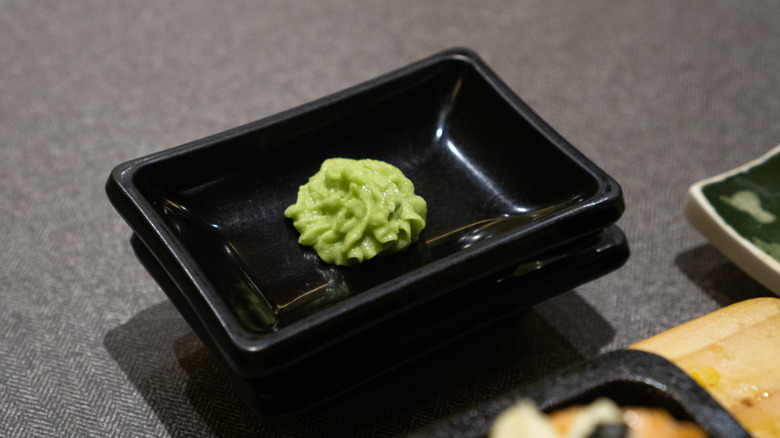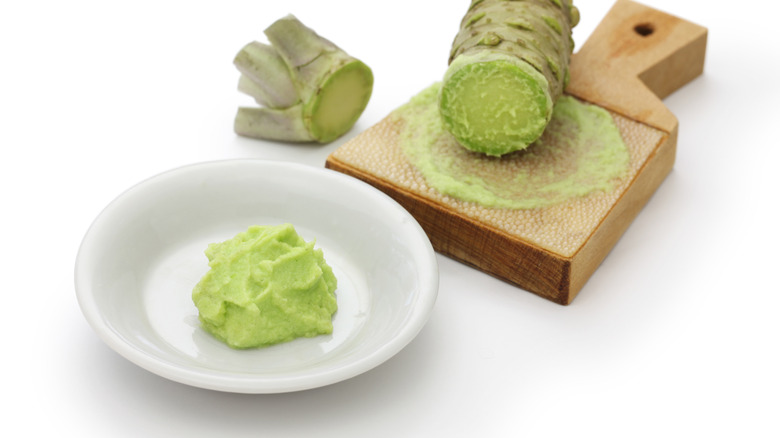How To Tell If Your Wasabi Is Fake
Even if you've never had sushi, you're probably aware of the mysterious green substance known as wasabi. But here's the rub: You could've been eating sushi your whole life, and there's still a good chance you've never eaten real wasabi — more specifically, freshly grated wasabi.
Unfortunately for diners in Western countries, a very small percentage of restaurants use fresh wasabi, and this is directly tied to how difficult the plant is to cultivate. While the odds are overwhelmingly low that you've had the real thing in order to make a comparison, there are still plenty of tell-tale signs that you might be eating fake wasabi.
The first clear sign that you're eating the fake stuff is purely visual. If you look at a picture of freshly grated wasabi root, you'll notice it's slightly grainy, and its consistency is less uniform compared to imitation wasabi. This is because it's a root and contains small fibers (as does any plant) that get broken down and mixed in after grating. Fake wasabi, however, comes in a couple of different forms, such as rehydrated wasabi powder that resembles Play-Doh, or pureed horseradish with green food coloring and added stabilizers that has a smoother, paste-like consistency. Moreover, that green food coloring in all fake wasabi has a synthetic tinge that the human eye can easily recognize as unnatural.
More ways to tell if your wasabi is fake
Imitation wasabi isn't just recognizable by sight; your taste buds can also detect it. Everyone can probably remember the first time they had "wasabi" and unknowingly put too much on their piece of sushi or in their soy sauce, resulting in a burning sensation so intense, they seriously questioned their life choices. In fact, when you taste the real thing, you're much less likely to experience that kind of pain in your face, since freshly grated wasabi has an appealing fragrance and a much more rounded heat. That's not to say it won't attack your nostrils if you ingest too much at once, but it won't have the signature pungency of wasabi substitutes, like artificially green horseradish.
The last surefire sign you're eating the fake stuff is if you're not paying an arm and a leg for it. Few people (especially tourists) understand the cost of real wasabi: When you go to Japan and have an expensive sushi dinner, the money you're throwing down goes toward getting you authentic grated wasabi to complement your traditional meal. In general, fake wasabi is so mass-produced, some restaurants have it in individually wrapped packets as disposable as table salt. If you see it coming out of a tube, a plastic packet, or small tin, it's most likely fake.

